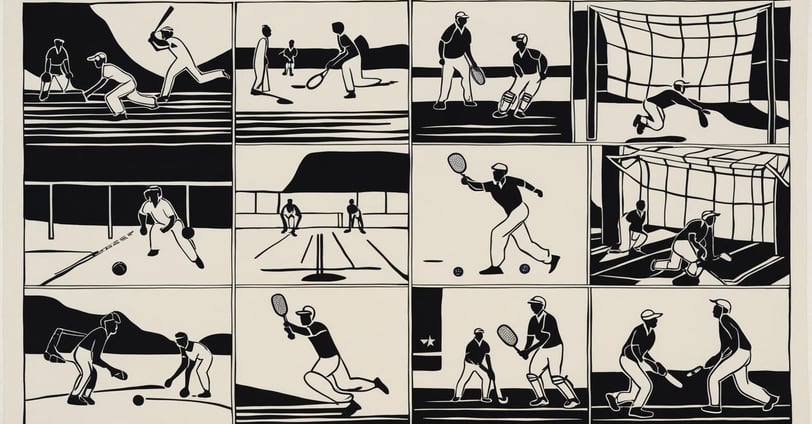History of Sports In India
Dive into the rich history of sports in India, from ancient games like wrestling and chess to modern triumphs in cricket, hockey, and Olympics. Explore how traditions merged with global influences, leading to iconic achievements and the rise of sports leagues, shaping India’s vibrant sporting culture and global presence.


History of Sports in India
Sports in India have a long and diverse history, rooted in the country's rich cultural and traditional heritage. From ancient games played in villages to modern international achievements, India has witnessed a remarkable journey in the world of sports.
Ancient Times
Sports in India date back thousands of years. Ancient texts like the Vedas, Ramayana, and Mahabharata mention various physical activities and games. Wrestling (kushti), archery, and chariot racing were popular during this time and were often associated with warriors and royalty. Chess, or "chaturanga," was invented in India during the Gupta period and is considered one of India’s greatest contributions to the world of games.
Yoga, though not a sport in the conventional sense, originated in ancient India and has been widely practiced as a form of physical and mental discipline.
Medieval Era
During the medieval period, sports like horse riding, polo, and sword fighting gained prominence under the influence of kings and emperors. The Mughal rulers introduced new games such as kabaddi, a traditional Indian sport, and modern polo, which evolved from an earlier form called "chaugan."
Colonial Period
The British colonization of India in the 18th and 19th centuries introduced several modern sports, including cricket, hockey, and football. Cricket became particularly popular, especially after India's first cricket club, the Calcutta Cricket Club, was established in 1792.
Field hockey emerged as a major sport, and India dominated the game during the early 20th century. The Indian hockey team won its first Olympic gold medal in 1928 and continued to win six consecutive gold medals until 1956.
Football also gained popularity, with Kolkata emerging as the hub of the sport. Clubs like Mohun Bagan and East Bengal played an essential role in developing Indian football.
Post-Independence Era
After gaining independence in 1947, India made efforts to promote sports on a national level. The establishment of the Sports Authority of India (SAI) in 1984 aimed to identify and train talented athletes.
In cricket, India won its first major international trophy by defeating the West Indies in the 1983 Cricket World Cup. This victory cemented cricket as the most popular sport in the country.
India also excelled in individual sports, with legendary athletes like Milkha Singh in athletics and Dhyan Chand in hockey inspiring generations. Women athletes like P.T. Usha brought attention to the capabilities of Indian sportswomen.
Modern Era
In recent years, India has achieved remarkable success in various sports. Players like Sachin Tendulkar and Virat Kohli have made cricket a religion in India. Olympic successes in badminton (P.V. Sindhu, Saina Nehwal), wrestling (Sushil Kumar, Bajrang Punia), and boxing (Mary Kom) have showcased India's talent on the global stage.
Sports leagues like the Indian Premier League (IPL) and Pro Kabaddi League have added a commercial and entertainment dimension, attracting global attention.
India's sports history reflects a blend of tradition and modernity. With growing investments in infrastructure and support for young athletes, the country continues to carve its place in the global sports arena. From ancient games to modern triumphs, sports remain a vital part of India's cultural identity.
